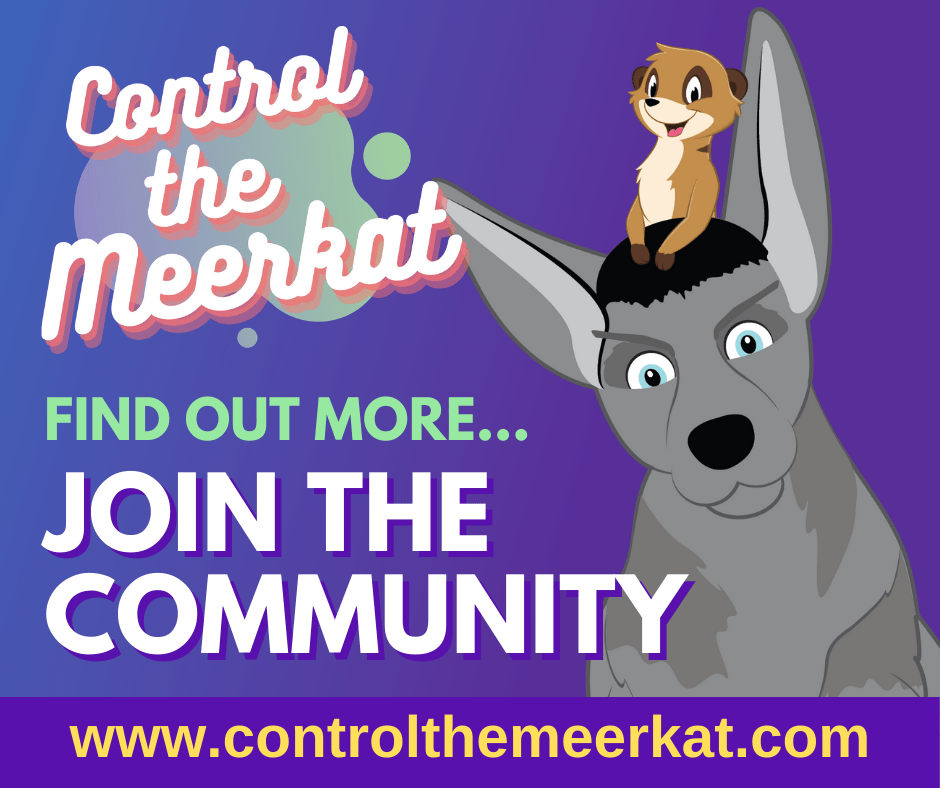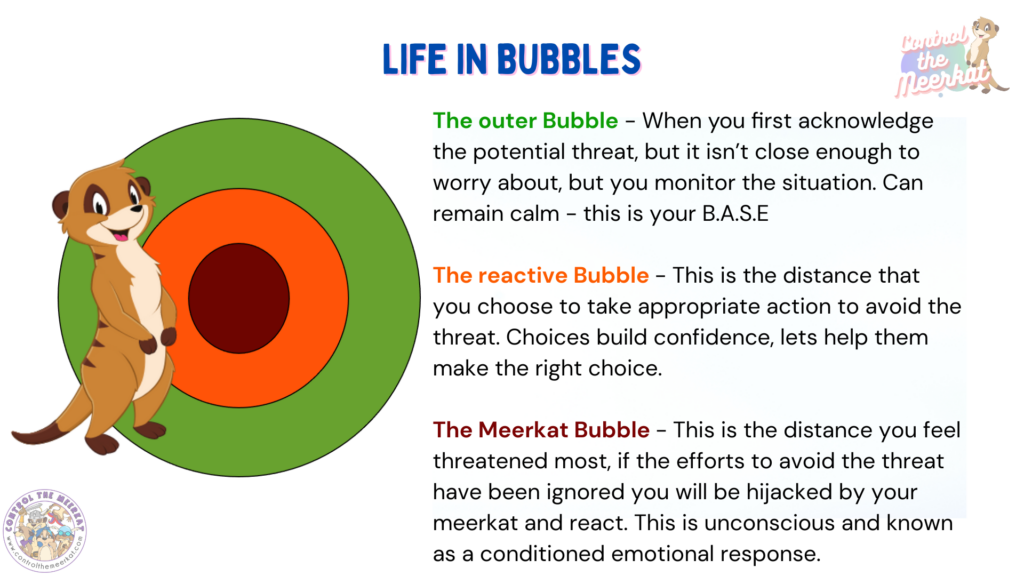
All animals live within a series of bubbles, which are used when we feel threatened. These bubbles will change in size depending on the situation. For example, if walking down a busy street during the day, you wont feel too threatened by the people passing you by, unless they come within your personal bubble.
However, if you walked along the same street at night, you will notice the people walking towards you sooner and may even start to
feel threatened before they get close, when they reach your reactive bubble, you may choose to cross the street.
This assessment of threat is normal behaviour for every species and there are distances from which we will feel threatened, which are fluid and will change depending on the context of situation, in the above example, the only part that changed was the time of day.
How Does This Apply To My Dog?
Your dog lives in the same three bubbles, which change in shape too, and they also have the same 5 choices when they need to react. However, often their attempts to escape are thwarted by leads, or confinement in a room or corner or pain, so fleeing is not always an option; this can create conflict and added frustration.
Depending on breed and age, freeze, fawn, or fool around may be an option, both of which are commonly ignored, by their handlers as it’s not ‘seen’. Therefore, fight is their last and only option.
It is important to remember that dogs are social animals and many will prefer to avoid a fight wherever possible. They have a whole repertoire of body language that they use to diffuse situations, which can be seen below on the ‘ladder of aggression’. If the first stages, like looking away and nose licks are ignored, they will go up the ladder. Eventually they will growl, snap or bite, these are generally the only acknowledged part of the ladder. Therefore, dog then learns these are the only effective parts and may even bypass some of the stages as they have learned that no one listens to them.
Reactions
As with all animals you have 5 choices for your initial reaction. For many reactive and sensitive dogs, the repeated exposure to threats has resulted in them displaying these threat responses more often. They have developed a primary trauma response and are more likely to get hijacked by one meerkat in particular, rather than it being context specific or based on what worked best last time, commonly seen in dogs who haven’t been impacted by trauma. Often these reactions are instinctual and not something they can control at this stage. These are :
Fight
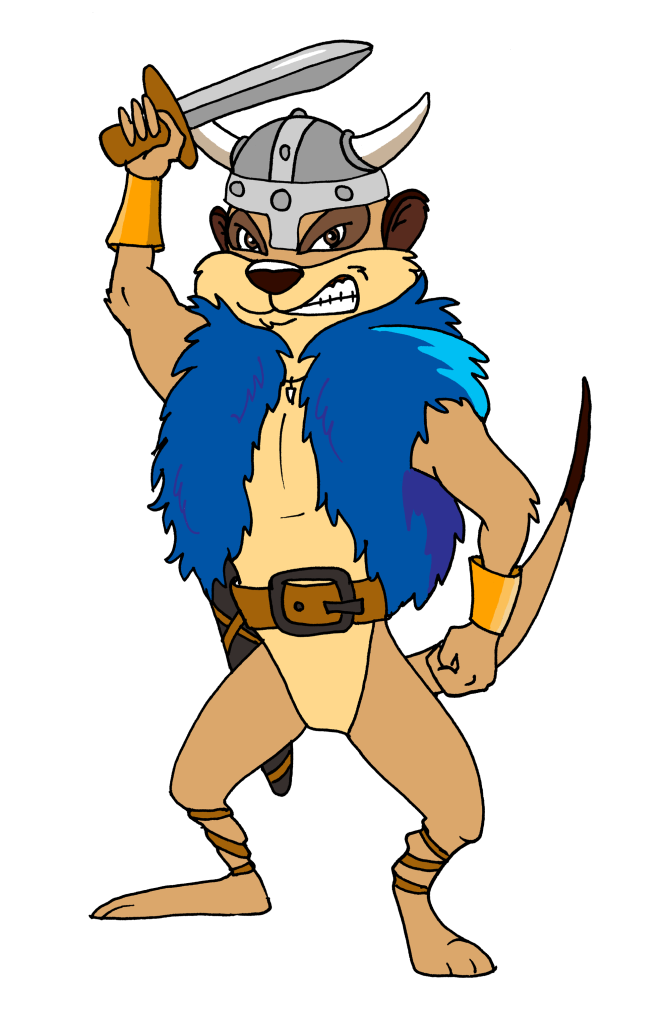
Flight
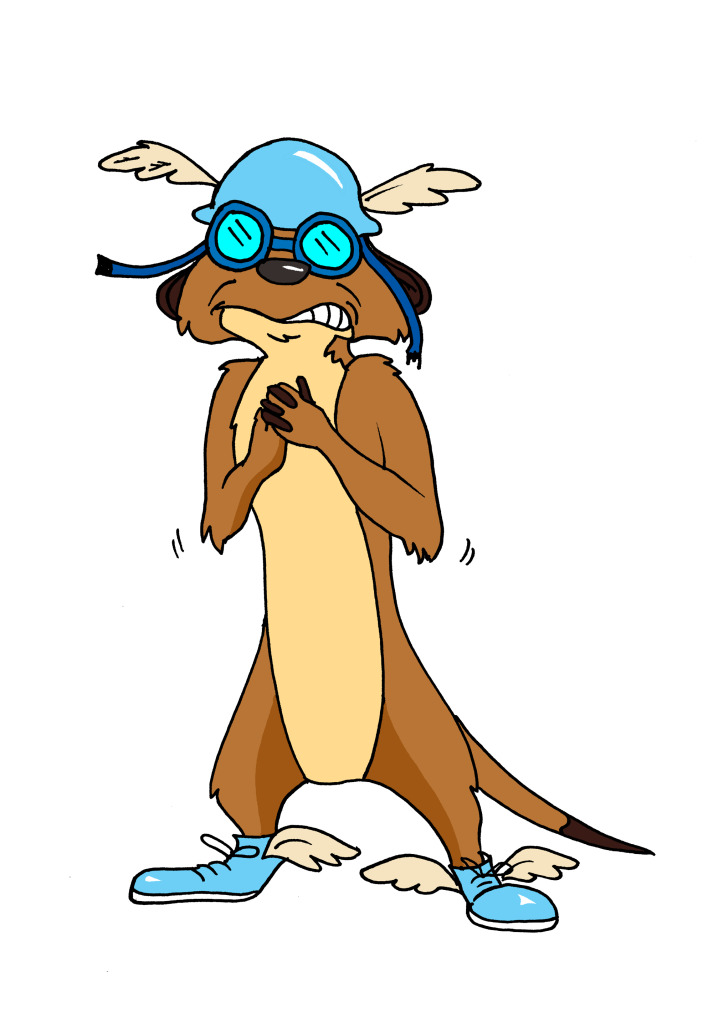
Freeze
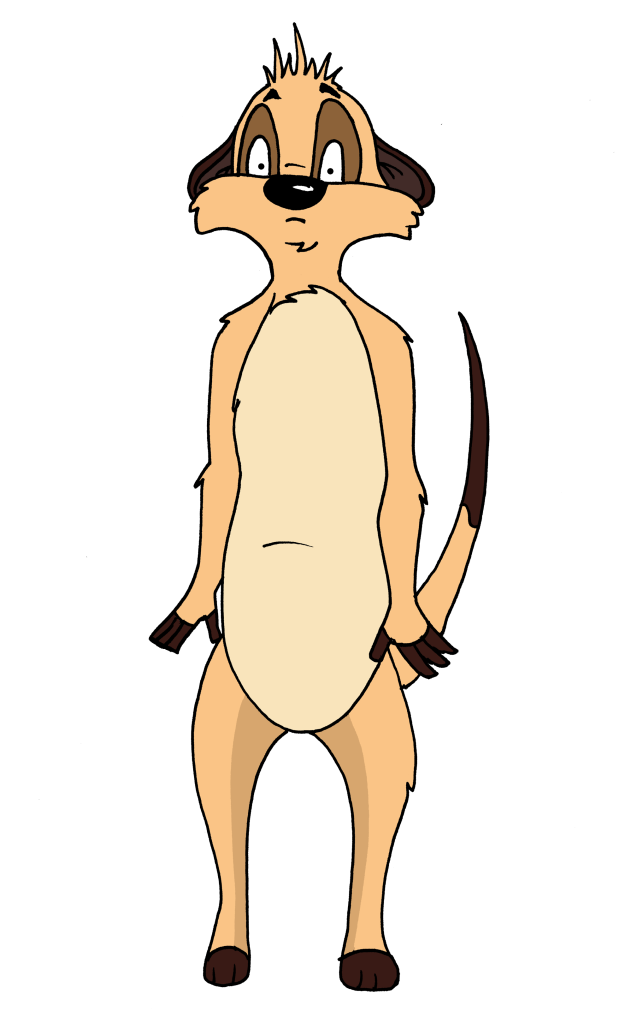
Fool
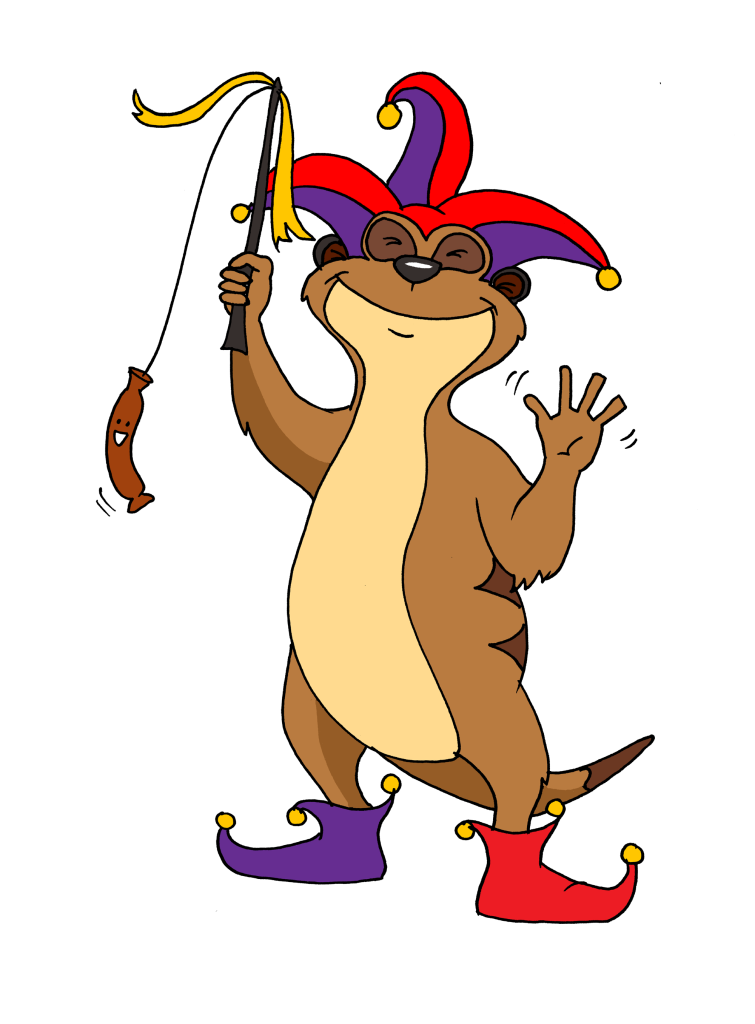
Fawn

Understanding your dog
When living with a reactive or sensitive dog it’s difficult to always understand their point of view. We can’t always figure out why they’re reacting the way they are; it can be so frustrating. During the Meerkat course ‘Dog-ter Spock & The Meerkat’ we discussed why your dog can’t always have control of their own actions, as they get hijacked by their emotional Meerkat. We need to understand exactly what is going on for your dog so we can help them to ‘Control The Meerkat’. It’s important that we remember this when they do react, it’s often not within their ability to control themselves yet. If they react it’s because they’re not ready for that situation yet, we need to advocate for them and help build their confidence and emotional control so they can cope in these situations.
The first things we need to be aware of when living with these dogs is distance from the ‘threat’, duration exposed to the ‘threat’, and other distractions in the environment. These distractions can include changes in weather, temperature, illness, pain / discomfort, fireworks, over excitability, people jogging, livestock, sounds from a school yard. Anything that will increase your dogs arousal or sensory levels will make it harder for them to focus, more so if they have an overactive Meerkat.
You will notice that your dog is often able to take food and focus in some situations, but not others or may even start to snap at the food, spit it out, or ignore you completely. They may be able to take food at one moment and listen, then stop. This is often due to how close they are to something they feel threatened or overwhelmed by. If they get too close their brain shuts down and their emotional Meerkat takes over! The longer something is present for, can increase that threat level for your dog rather than lowering it.
Our dogs may be able to cope for a short amount of time, but they soon can’t. Other times they can relax in a situation, but if anything changes, like a visitor moving, they’re back to reacting. Occasionally, rather than our dogs relaxing with duration, some will shut down. They will stop reacting, but they’re not calm. Their breathing rate is still high, they are jumpy and almost robotic. These dogs have a passive response to threats and are often our ‘fawn’ Meerkat. Please be aware that no behavioural reaction doesn’t always mean relaxed, some may be our ‘freeze’ Meerkat, others the ‘fool, Meerkat and appear ok as they’re masking. Therefore, we have to Control The Meerkat, to relax your dog, before we can work effectively with them. We want to keep your dog in the green zone, as much as possible to help support your dog.
Dogs Impacted By Trauma
Having a threat response system activated can result in trauma and a form of post traumatic stress. For many dogs, they can just shake it off as unpleasant and continue their day. Others it may result in a short term context anxiety and they bounce back. However, just like people, there are other who are more deeply affected by this, especially if they have been repeatedly exposed to threats (from their perspective). These dogs may develop trauma responses in situation that aren’t threatening, as their ‘Meerkat’ is in overdrive. They dont believe that they are safe and everything is a potential threat to them. These dogs can’t be helped with training alone, they need a sense of safety, trust and connection first.
Having a threat response system activated can result in trauma and a form of post traumatic stress. For many dogs, they can just shake it off as unpleasant and continue their day. Others it may result in a short term context anxiety and they bounce back. However, just like people, there are other who are more deeply affected by this, especially if they have been repeatedly exposed to threats (from their perspective). These dogs may develop trauma responses in situation that aren’t threatening, as their ‘Meerkat’ is in overdrive. They dont believe that they are safe and everything is a potential threat to them. These dogs can’t be helped with training alone, they need a sense of safety, trust and connection first.

Join Our Supportive Community and Learning Empawrium
Living with a reactive dog can be so hard and isolating, it’s difficult to find people who truly understand what it’s like. If you’d like more support from like minded people, where you can discuss the difficulties and successes of living with a reactive dog in a safe environment, join out community. Our supportive forums are all run and moderated by animal behaviour and training professionals; so you can be assured you’re in safe hands.
By joining the community you gain access to:
- Access our E-Books and training resources
- Chats with our Qualified team experts to gain advice about your dog.
- Access our instructional videos
- Talk live to our qualified team every month for Meerkat Monday
- Download our Planners and Diaries to log your journey
- Join others in the same boat and share your experience in our supportive forums.
